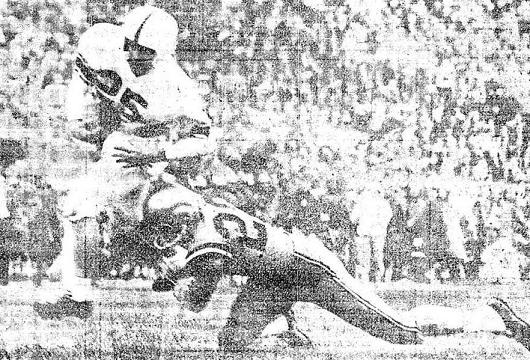



| North Carolina (2-7-1) | 36-0 | |
| Kansas State (3-7) | 66-0 | |
| (Dallas) Texas (1-9) | 45-0 | |
| at Kansas (3-6-1) | 34-12 | |
| at Notre Dame (2-8) | 40-0 | |
| at Colorado (8-2-1) | 27-19 | #22 |
| at Iowa State (2-8) | 44-0 | |
| Missouri (4-5-1) | 67-14 | |
| Nebraska (4-6) | 54-6 | |
| at Oklahoma State (3-5-2) | 53-0 |
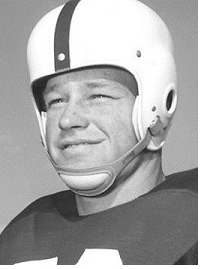 Well, I'll start by simply copying and pasting much of what I wrote about Oklahoma in my 1955 national championship article: Oklahoma was doing pretty
well for themselves in the postwar years. They had
gone 11-0 in 1949, and
I consider them to be an MNC for that season; they finished #1
in the AP poll in 1950,
but then lost in the Sugar Bowl; they went 10-0 in 1954,
but fell short of an MNC that year; then they went 11-0 in 1955 and brought home their 2nd MNC.
I covered their Hall of Fame coach, Bud Wilkinson, in the linked 1949
national championship article. This season's 10-0 effort continued
Oklahoma's NCAA record 47 game winning streak that stretched from 1953
to 1957.
Well, I'll start by simply copying and pasting much of what I wrote about Oklahoma in my 1955 national championship article: Oklahoma was doing pretty
well for themselves in the postwar years. They had
gone 11-0 in 1949, and
I consider them to be an MNC for that season; they finished #1
in the AP poll in 1950,
but then lost in the Sugar Bowl; they went 10-0 in 1954,
but fell short of an MNC that year; then they went 11-0 in 1955 and brought home their 2nd MNC.
I covered their Hall of Fame coach, Bud Wilkinson, in the linked 1949
national championship article. This season's 10-0 effort continued
Oklahoma's NCAA record 47 game winning streak that stretched from 1953
to 1957.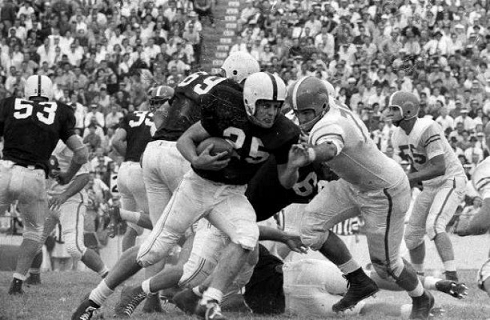
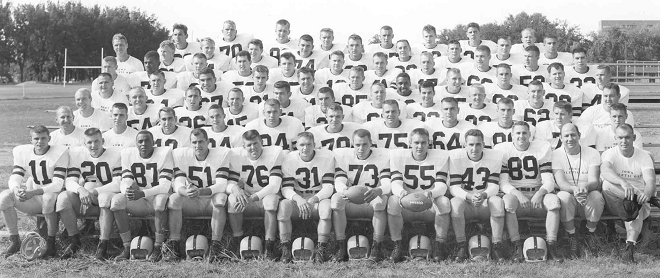
| at Indiana (3-6) | 27-0 | |
| Oregon State (7-3-1) | 14-13 | #17 |
| Wisconsin (1-5-3) | 13-7 | |
| Hawaii (7-3) | 34-0 | |
| at Purdue (3-4-2) | 21-20 | |
| Michigan (7-2) | 14-17 | #8 |
| at Minnesota (6-1-2) | 7-0 | #7 |
| Ohio State (6-3) | 6-0 | #16 |
| Notre Dame (2-8) | 48-8 | |
| Rose Bowl Oregon State (7-3-1) | 35-19 | #17 |
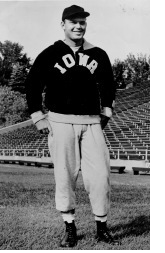 Iowa
had mostly been a Big 10 also-ran in their football history. That
changed for a while under Hall of Fame coach Howard Jones, who went
42-17-1 at Iowa 1916-1923, winning 2 Big 10 titles and the 1921 mythical national championship.
But Jones moved on to Southern Cal, where he continued to win national
championships, and Iowa eventually sank back into mediocrity, and
worse. They still fielded top 25 teams 4 times in the first 6 years
under Burt Ingwersen, who succeeded Jones as Iowa head coach, but then
the bottom fell out, and 1930-1951, Iowa went 66-107-12, finishing
ranked just 4 times in those 22 seasons.
Iowa
had mostly been a Big 10 also-ran in their football history. That
changed for a while under Hall of Fame coach Howard Jones, who went
42-17-1 at Iowa 1916-1923, winning 2 Big 10 titles and the 1921 mythical national championship.
But Jones moved on to Southern Cal, where he continued to win national
championships, and Iowa eventually sank back into mediocrity, and
worse. They still fielded top 25 teams 4 times in the first 6 years
under Burt Ingwersen, who succeeded Jones as Iowa head coach, but then
the bottom fell out, and 1930-1951, Iowa went 66-107-12, finishing
ranked just 4 times in those 22 seasons.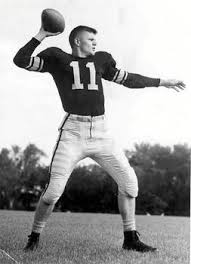
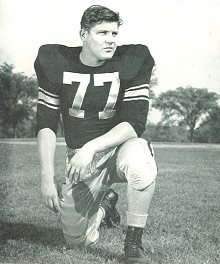
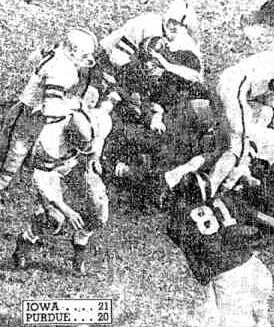
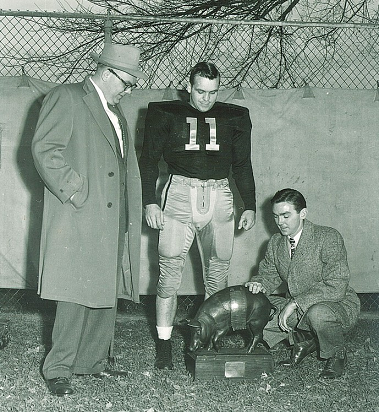
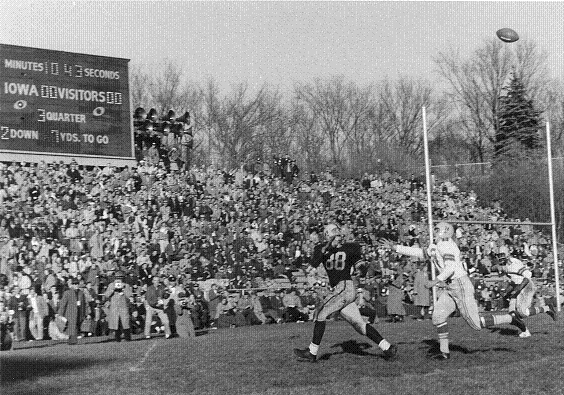
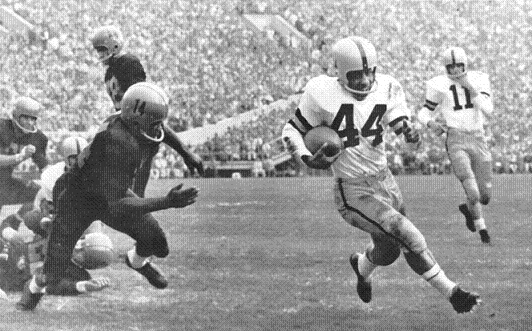
| Oklahoma 10-0 | Iowa 9-1 | ||||||||||||||||||||||||||
|---|---|---|---|---|---|---|---|---|---|---|---|---|---|---|---|---|---|---|---|---|---|---|---|---|---|---|---|
|
|
||||||||||||||||||||||||||
| 1) DeVold
(math system) |
4.96 |
| 2) National Championship Foundation | 4.83 |
| 3) Billingsley (math) | 4.76 |
| 4) Dunkel (math) | 4.58 |
| 5) Poling
(math) |
4.54 |
| 6)
College
Football Researchers Association | 4.533 |
| 7) Houlgate (math) | 4.529 |
| 8) Litkenhous
(math) |
4.32 |
| 9) Boand (math) | 4.29 |
| 10) Sagarin-ELO (math) | 4.252 |
| 11) AP Poll | 4.248 |
| 12) Sagarin (math) | 4.19 |
| 13) Helms Foundation | 4.14 |
| 14) Williamson (math) | 3.73 |
| 15) Berryman (math) | 3.48 |
| 1) Boand (math system) | 4.26 |
| 2) College Football Researchers Association | 4.22 |
| 3) Poling (math) | 4.11 |
| 4) Helms | 4.09 |
| 5) Sagarin-ELO (math) | 4.06 |
| 6) National Championship Foundation | 3.96 |
| 7) Dickinson (math) | 3.49 |
| 8) Houlgate (math) | 3.35 |
| 9) Billingsley (math) | 3.34 |
| 10) Sagarin (math) | 3.28 |
| 11) Parke Davis | 2.77 |
| 1) Houlgate (math system) | 4.5 |
| 2) Helms | 4.3 |
| 3) Parke Davis | 4.2 |
| 4) National Championship Foundation | 3.7 |
| 5) Billingsley (math) | 3.6 |